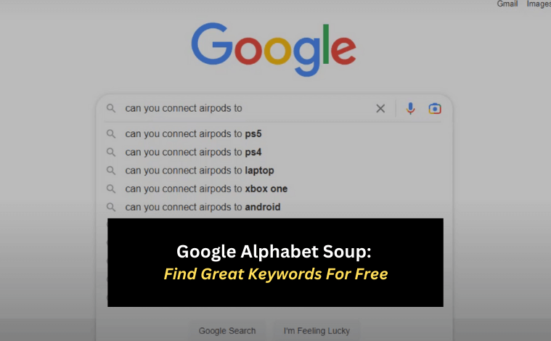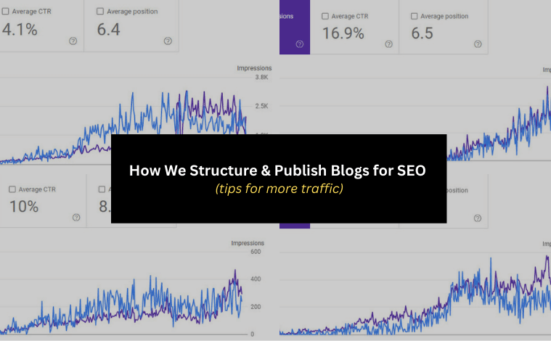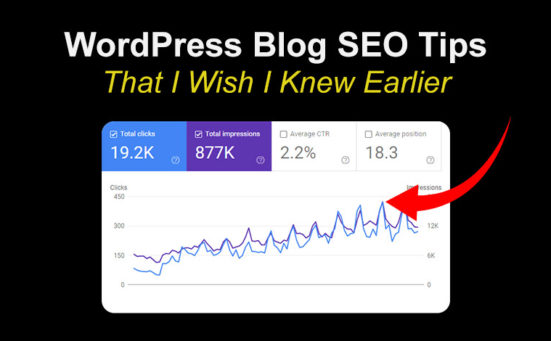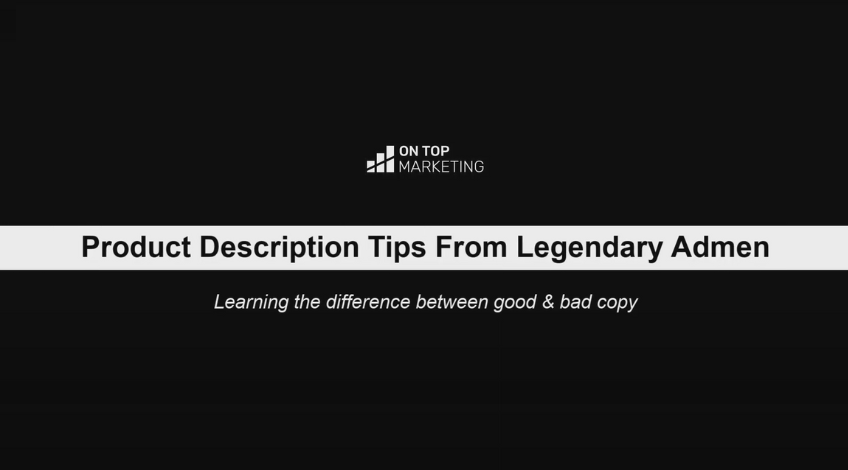
AI can help us do a lot of the heavy lifting when it comes to writing product descriptions. But, without knowing what a world-class product description looks like, it’s hard to know what a good response and what a bad response is.
Today, we’ll go over the best tips for writing product descriptions using the knowledge of the greatest admen that ever lived.
How To Write Product Descriptions That DO Work
Advertising can be tricky. There are a lot of things that need to be done to actually complete a sale.
A good product description can be the main factor that will transform someone’s casual browsing on the internet into an actual decisive purchase. These descriptions are not just about listing features, but also include the use of persuasion and information to ignite a consumer’s desire to buy.
In this article, I’ll share some of the things that have greatly helped me on my personal journey through my five favourite books on advertising: Claude Hopkins’s Scientific Advertising, David Ogilvy’s Confessions of an Advertising Man and Ogilvy on Advertising, Andy Maslen’s Write to Sell: The Ultimate Guide to Great Copywriting, and Victor Schwab’s How to Write a Good Advertisement.
Let’s start!
The Dos And Don’ts For Writing Product Descriptions
Writing a product description that generates results can require some trial and error. It especially needs a thorough understanding of what your potential customers or target market is looking for.
Here are the dos and don’ts you should remember:
DOS
Go For Short And Concise
Get to the point quickly. Always aim for short, concise paragraphs packed with value.
Your customers are busy and will appreciate concise information that makes the purchasing decision easier.
Hopkins advises that effective communication should be like a good salesman: direct, concise, and convincing. Your product description should answer the main question: “How will this product improve my life or solve my problem?”
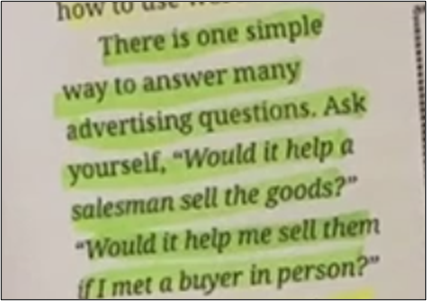
When you’re writing a description, always put yourself in the shoes of your target market. Will reading your advert convince you to actually buy what you’re selling?
Or does it contain too much rambling that and make you unsure whether it would benefit you?
Use The Customers’ Language
Always speak the language of your customers. Ogilvy emphasises on the importance of using familiar terms and phrases that will resonate with your target audience.

If you’re selling a product that is for everyday use, keep the language simple and relatable. Being conversational with the description could also help.

Are you selling technical products? You can use the specific terms that your knowledgeable audience would understand.
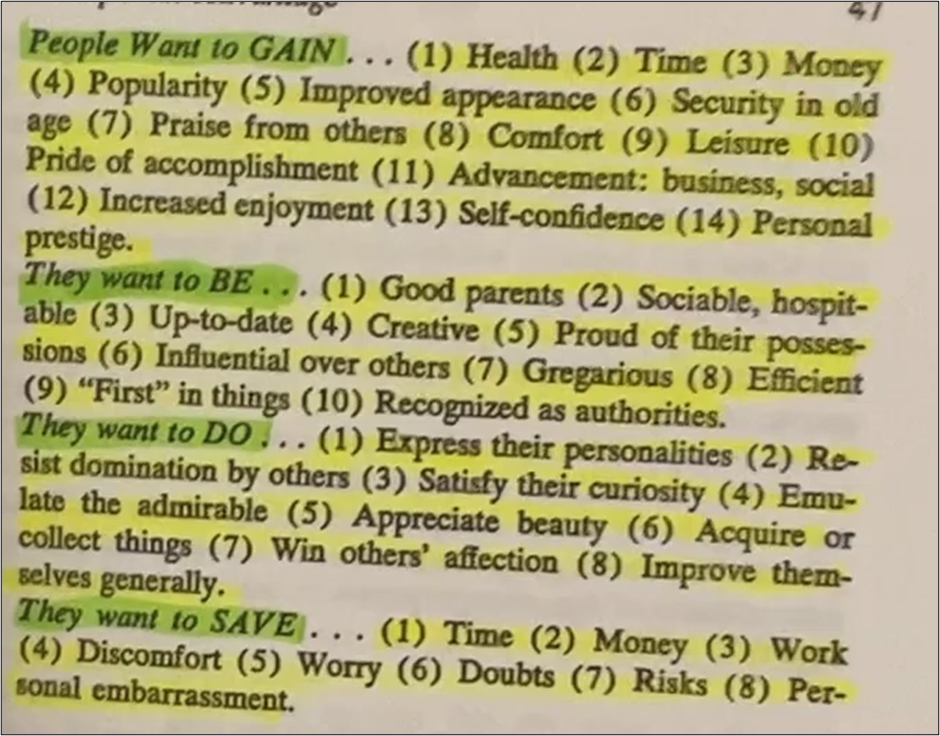
People communicate through their needs. Always make sure that you do your research on your target market, such as what they want to gain, be, do, and save, for better results.
TIP: Present features in a way that allows consumers to justify their emotional decision to purchase with logical reasons.
Highlight The Benefits And Positives
Focus on how the product can positively impact the customer’s life. Schwab also mentioned the importance of addressing the consumer’s desires and how the product fulfils them.

Instead of just listing features, explain how these features translate into real-world benefits. For instance, don’t just say a smartphone has a 5000mAh battery. Explain that it means the user can enjoy two days of uninterrupted use without needing to recharge.
Why get a smartphone that needs to be charged every 6 hours when they can get one that could last them for more than a day?

Always appeal to the self-interest of your target market. Advertisements should address the reader’s selfish motivations, promising a clear benefit or improvement.
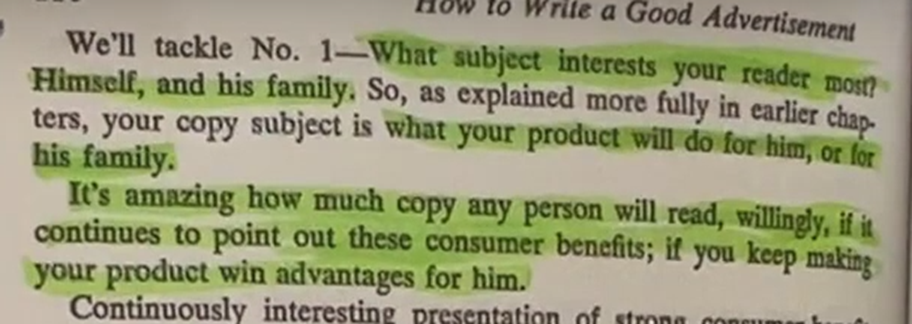
TIP: Emphasise the benefits each feature offers to the customer, answering the implicit question, “What’s in it for me?”.
Think Headings And Subheadings Through
Headings and subheadings are crucial when creating a product description.
Both of them should encourage intrigue enough to engage target consumers to read further, and then buy your product.
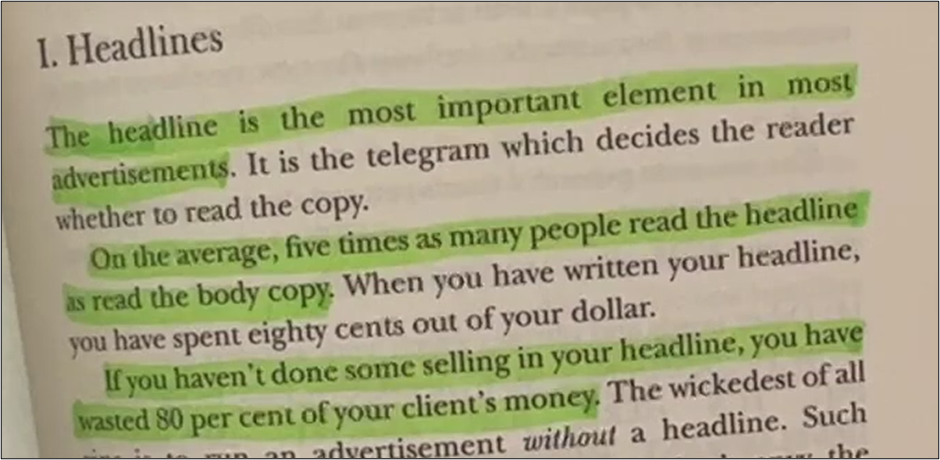
Make sure that your headings and subheadings are engaging and informative, offering a clear benefit or solution that’s going to be explained in the following text.
Good headings invite the reader to continue reading and explore the product’s features and benefits in detail.
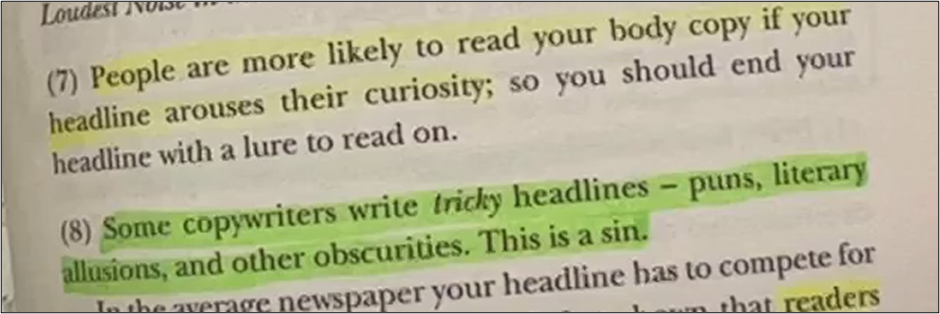
Since headings are limited in word count, your subheadings should continue to sell benefits and facilitate skimming.

Remember, we’re not trying to impress people with how smart we are. We’re trying to sell products, and we do that by being as clear and concise as possible with our subheadings.
Use Specific Claims
Like all things, whether in relationships or establishing rapport with your target market, remember that authenticity builds trust.
Use real figures and specific facts to support claims, enhancing credibility and interest.
People have different needs, but giving them specific claims that can be verified is more credible and compelling. The result? A higher chance of convincing them to try your product.
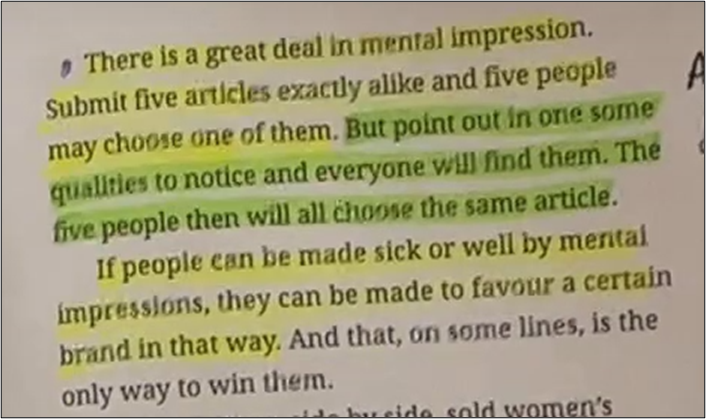
Exaggerated claims can lead to distrust and damage the brand’s reputation.

Hopkins mentions that a single factual statement can have more impact than a dozen adjectives. Stick to the truth, and use real-world data and examples to back up your claims.
TIP: If applicable, include positive testimonials and user reviews. This can significantly influence your target market’s decisions.
Use Readable Formats
When writing your description, use short paragraphs, bullet points, and frequent, bold subheadings to make the description easier to read and engage with.
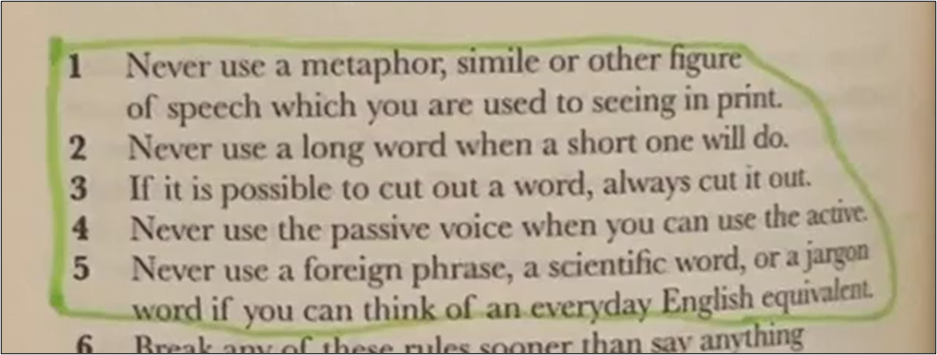
Layout and formatting play a significant role in readability. Keep paragraphs and sentences short to make the text easier to scan.
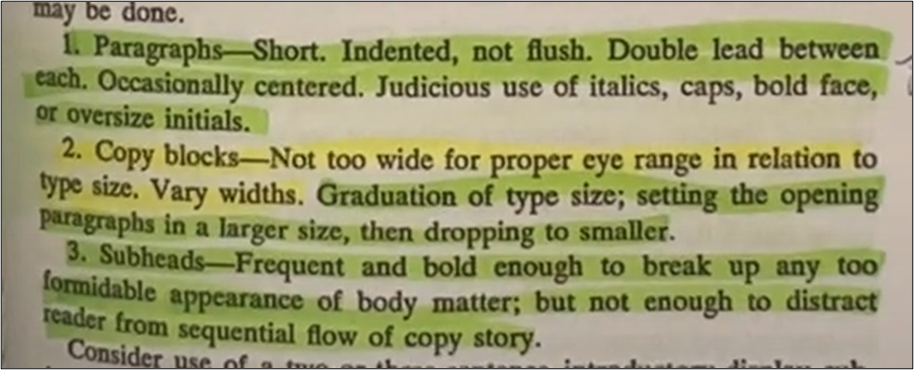
Use bullet points to list features and benefits, and use bold or italic text to highlight key points without overwhelming the reader.
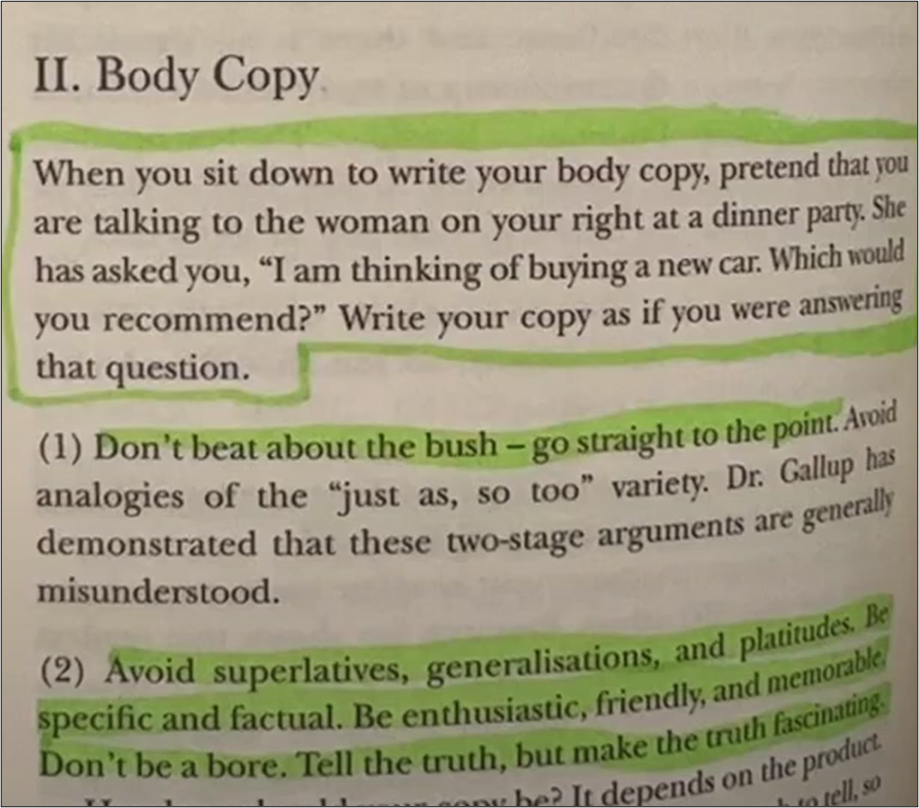
You don’t want to give your target consumers a hard time reading the descriptions.
Instead, you want to make everything easy for them to ensure that they understand what your product can give them.
Go For Longer Copy
Longer descriptions can be very effective, especially for complex or high-value products. A longer description will give you the opportunity to cover all the features and benefits in detail.

But make no mistake: longer copy does not mean a tedious read. Instead, it must remain engaging and relevant.

You have the platform to market your product. Make sure to make the most out of it.
Use your resources to give target consumers a compact description of what you’re selling.

DID YOU KNOW? Longer, interest-holding copy tends to perform better, provided it remains engaging and relevant to the reader.
Suggest Personal Ownership
Remember what we said earlier about explaining the benefits of your product? How it can improve the quality of your consumers’ lives? It’s also connected to ownership.
People make emotional decisions when making a purchase. Then, they have to justify their decisions with actual logic, which justifies the purchase to their spouse, boss, mother, or just themselves.

Hence, you need to help customers visualise owning the product. It is possible to create a sense of ownership by telling a story that places the product in the customer’s life.
What I meant was that we can’t add their name to each product like he was suggesting. But we could paint a picture in their imagination (sparingly).
If we can tell a story that helps them to imagine themselves owning the product, we might be able to nudge them a little bit closer to clicking the buy button. After all, isn’t owning stuff cool?
TIP: Use scenarios that help the reader imagine using the product, increasing their emotional connection and desire to purchase.
Use Functional Images
Images should complement the text and help to sell the product. They should showcase the product in use, highlight key features, and demonstrate benefits.
For an image to be effective, it should not just be a decoration. They should make what you’re selling appear more desirable, and even provide visual proof of the benefits you’re mentioning in the description.

Using specific images such as close-ups can enhance the desire for the product.
This is important because if you’re talking about a specific feature of the product, you can design it in your website in a way that it will zoom into the product on that feature, and then embed that in your product description to show people the feature you’re talking about.
DON’TS
Use Flowery Words And Superlatives
Using flowery and unnecessary adjectives in a product description can do your copy more harm than good.

As Hopkins points out, statements like “best in the world” or “lowest prices ever” are often seen as untrustworthy.

When you’re writing our product descriptions, don’t use superlatives. You should have the information about its features, and if you don’t, do your research to make specific claims about the benefit you get from the feature.

When writing, resist the urge to appeal to your own ego. Yes, you are creating a description of your product, and it’s okay to feel proud when you think that it’s high quality.
But always remember that most campaigns work because they do work. You don’t want awards, you want to sell actual products. What’s the purpose of a beautiful paragraph when nobody is convinced to try what you’re offering?
Use Generalities
Vague statements that are too generalised and could apply to any product do not help the consumer make a decision. Be specific about what makes your product unique and why it is the right choice for the customer.
Avoid focusing solely on niche benefits that exclude the majority.

Of course, you don’t want to exclude the majority of people from buying your product so you don’t want to get too specific. Instead, look into what the majority of people want and then also include specific aspects.
For example, if you want to sell soap that improves complexion, you wouldn’t market it as a “soap that helps cure eczema”. Why? Because there are a lot more people who want to improve their complexion than those who are struggling with a skin condition.
In this case, we could actually group those things together and make a point somewhere in the content that this soap is so good for your skin that it’s even been proven to cure eczema.
This specificity not only helps to sell the product but also improves SEO as it aligns with the specific queries of potential customers.
TIP: If you want to improve SEO performance, do keyword research to understand what your potential customers are searching for. Then, use these terms in your product description.
Use Negative Phrases
Negative language can create the wrong impression.
For example, saying “doesn’t contain harmful chemicals” might lead customers to think about risks or dangers, rather than safety or benefits.
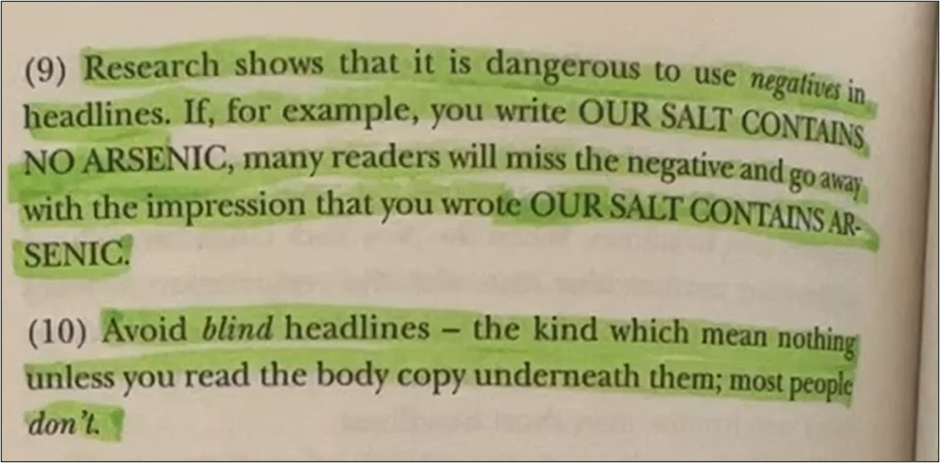
Avoid using negatives in headlines or content that could turn away or exclude potential buyers.
Instead, showcase the positive outcomes of using the product rather than the negatives it avoids.
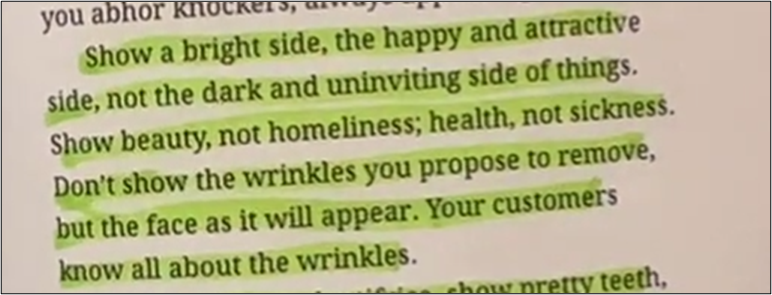
Always focus on the positive aspects and how the product will give your consumers value.

TIP: You want consumers to not think that your products are cheap. People want to know that they can afford valuable things, as it makes them feel good.
Focus On Sounding Witty Or Clever
The main goal of your description is to communicate the value of the product, not to showcase clever writing.

While wit and humour can be engaging, they should not overshadow the message that the product is valuable and worth purchasing.
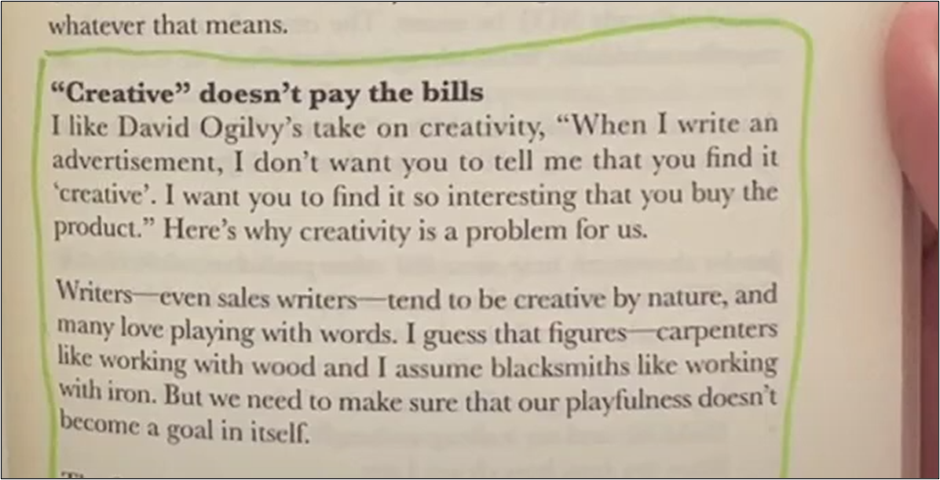
Creativity should serve the goal of selling, not distract or detract from it. Copies that are too focused on being witty or clever have a higher chance of failing to convert.
Hence, your copy should maintain the reader’s interest to the point of purchase with a compelling narrative that the product is actually worth buying.
TIP: Always highlight how your product will enhance the customer’s life, status, or happiness.
Start Writing Top-Notch Product Descriptions That Convert!
Creating effective product descriptions requires a proper balance of science and art. If you really want to sell your product, it doesn’t mean that you have to memorise every book to be successful in advertising. Learning the key principles and applying them is more important.
I hope that the teachings of successful admen will be as helpful to you as it has been to me. Remember: emphasise benefits over features, speak the customer’s language, and always prioritise authenticity and readability to turn casual browsers into committed buyers.
Do you have questions? Leave a comment and I would be happy to help!
SEE ALSO: How We Structure & Publish Blogs For Seo (9 Tips For More Traffic)
Frequently Asked Questions
To write a product description, be short and concise, use the customer’s language, and highlight the benefits and positives of what you’re selling.
In a product description, use words that are familiar to your target audience, highlight benefits with clear, factual language, avoid flowery words and superlatives, and integrate specific keywords that align with what potential customers are searching for to improve SEO.
The length of product descriptions can vary; they should be long enough to cover all features and benefits in detail for complex or high-value products, yet remain engaging and relevant. Longer, interest-holding copy tends to perform better.
Yes, product descriptions matter for SEO as they help search engines understand what the page is about and thus improve the visibility of your products in search results. Specific and relevant keywords in product descriptions can also match potential customers’ search queries, leading to better SEO performance.

